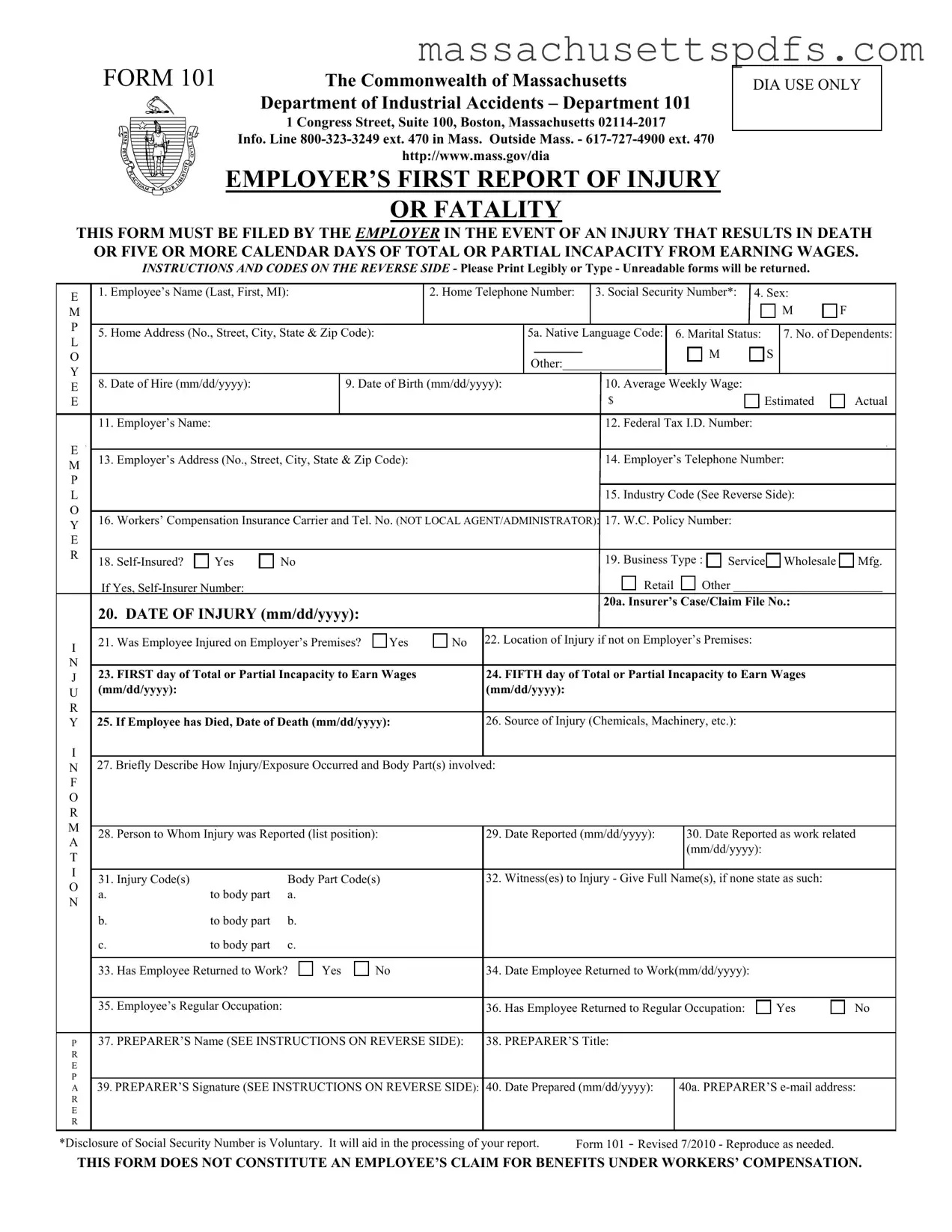Official 101 Massachusetts Template
The 101 Massachusetts form is a crucial document required by the Commonwealth of Massachusetts for reporting workplace injuries or fatalities. Employers must complete this form when an injury results in death or incapacity lasting five or more calendar days. Timely submission of this form is essential to ensure compliance with state regulations and to facilitate the processing of workers' compensation claims.
Ready to fill out the 101 Massachusetts form? Click the button below to get started!
Launch Editor Here
